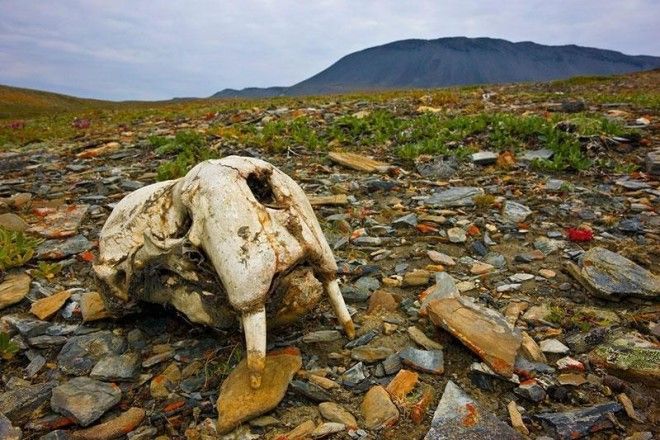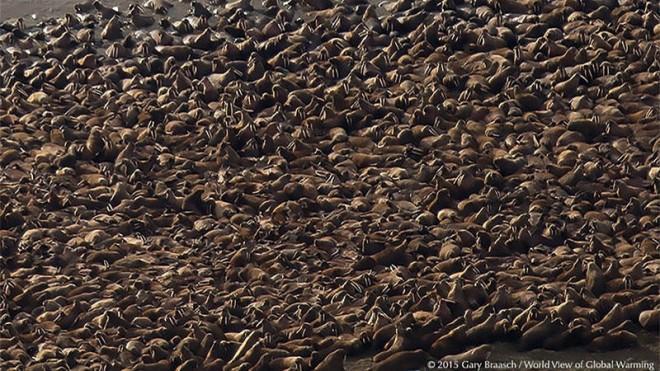Need more proof that warmer temperatures and ice melt are impacting our 49th state and its inhabitants? Just head to Point Lay, where thousands of walruses have unnaturally congregated on land—again.
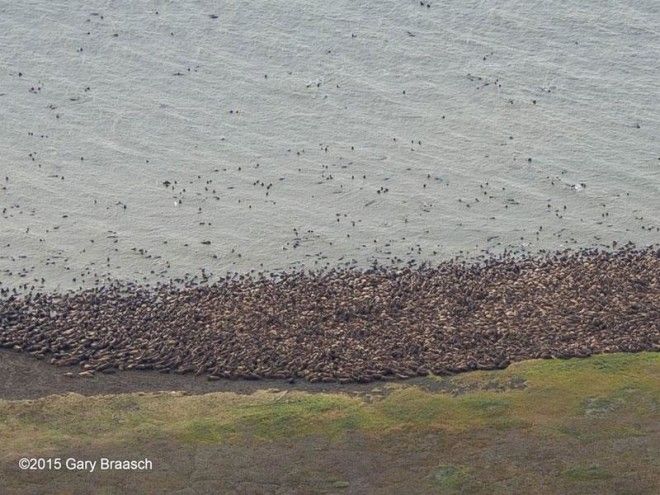
Photographer Gary Braasch snapped photos of about 6,000 walruses who congregated on the Alaskan coast approximately a week before Obama’s arrival. Compared to last year’s 35,000 shored walruses, this year’s herd seems manageable. Nevertheless, upon sight of 18 million pounds of blubber parading around the shore, the word “manageable” isn’t the first to pop to mind. Don’t believe us? Just check out.

Despite being known for their strength, walruses aren’t too good at swimming, and prefer to stay in shallow waters. What to us looks like thousands of walruses hanging out is actually an event known as “hauling out,” where a walrus exits from the water, often to rest, mate, give birth, protect themselves from predators, or simply take a breather.
Walruses tend to “haul out” on floating ice sheets, since they can remain close to food without having to swim to shore to rest.
Yet as ice sheets melt more rapidly than ever, the walruses’ turf dwindles, forcing them to move to land.
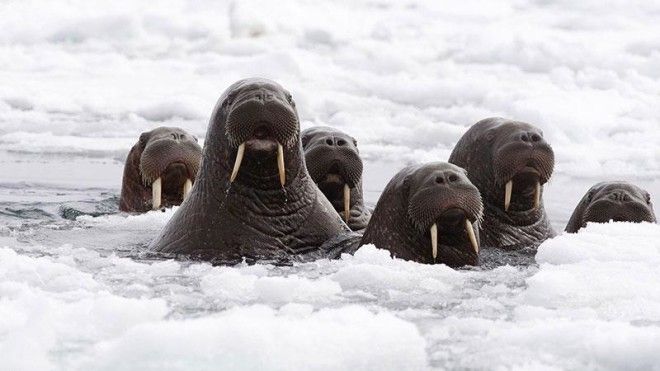
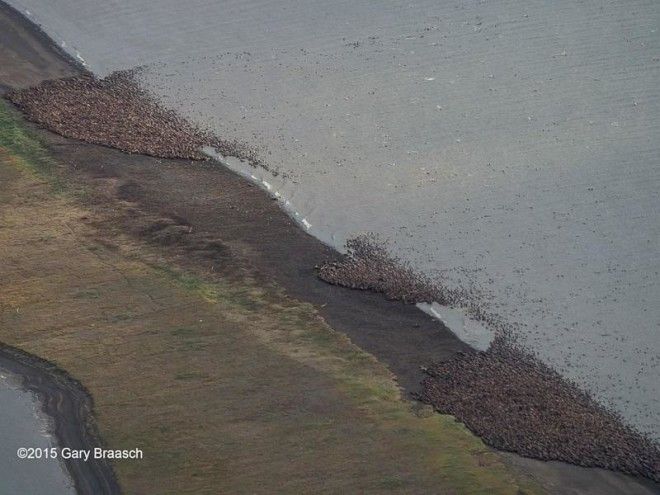
What’s the big deal about walruses choosing to haul out at Point Lay instead of on floating ice chunks? Well, it’s potentially deadly. Pacific walruses, which can weigh up to 4,400 pounds, are sensitive to the presence of ships and low-flying planes–last year human disruptions prompted male walruses to stampede, killing 60 pups–and face higher instances of disease when grouped in such massive numbers.
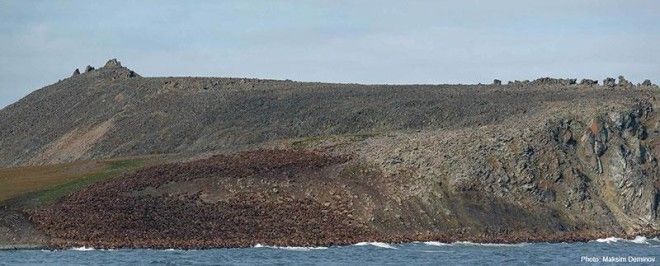
In addition, with so many blubbery bodies herding on the Alaskan shore, food supplies can dwindle quickly. Plus, the entire process is relatively new for the species. Until about eight years ago, walruses primarily hauled up on ice chunks and were rarely seen gathering on shore. These days, they’re disrupting daily life at remote villages like Point Lay, a place many Alaskans call home.
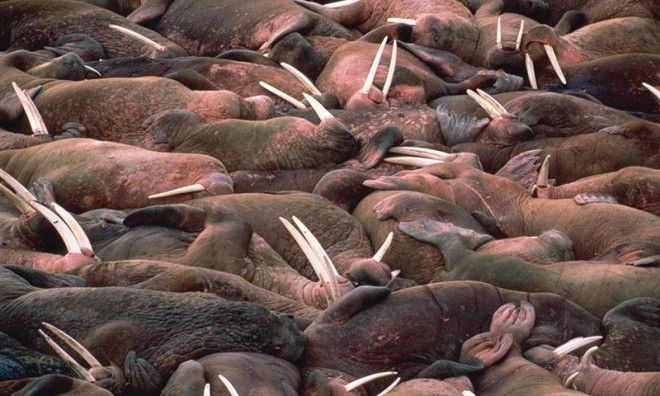
Walruses are extraordinarily important to native Alaskan culture, which means that climatic conditions which negatively impact walruses also harm natives. Global warming and other factors have contributed to depleting walrus populations, but the U.S. Fish & Wildlife Service won’t be ruling on whether the walruses should be classified as a threatened species (under the Endangered Species Act) until 2017.
